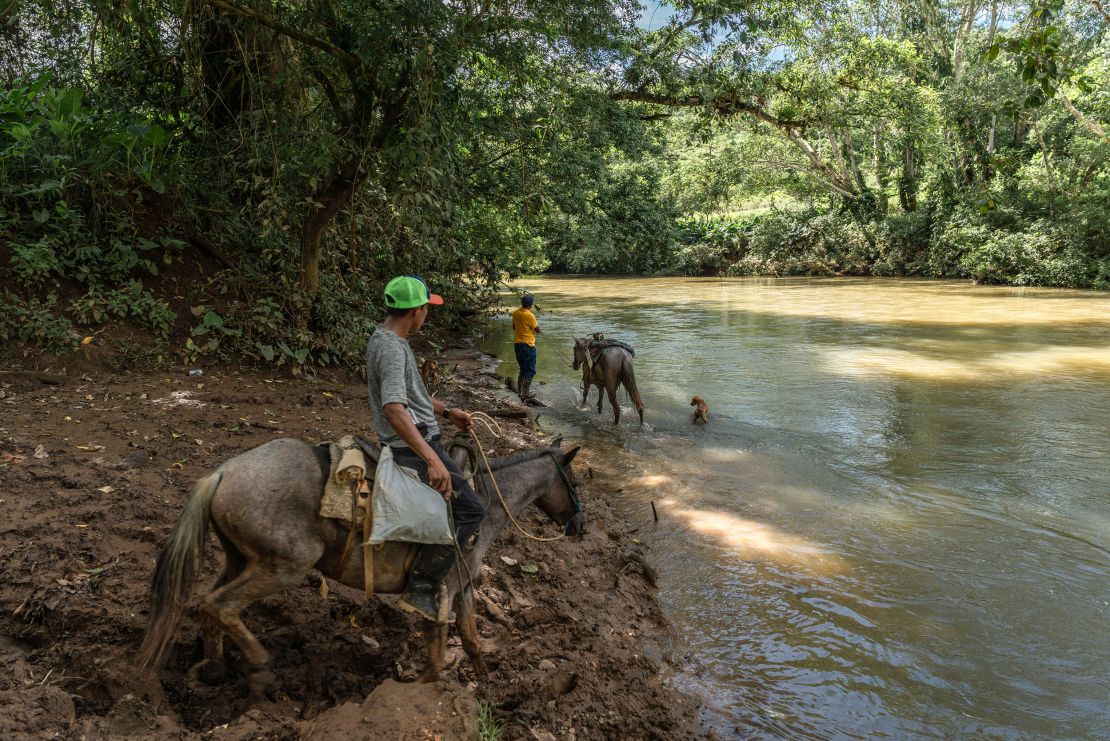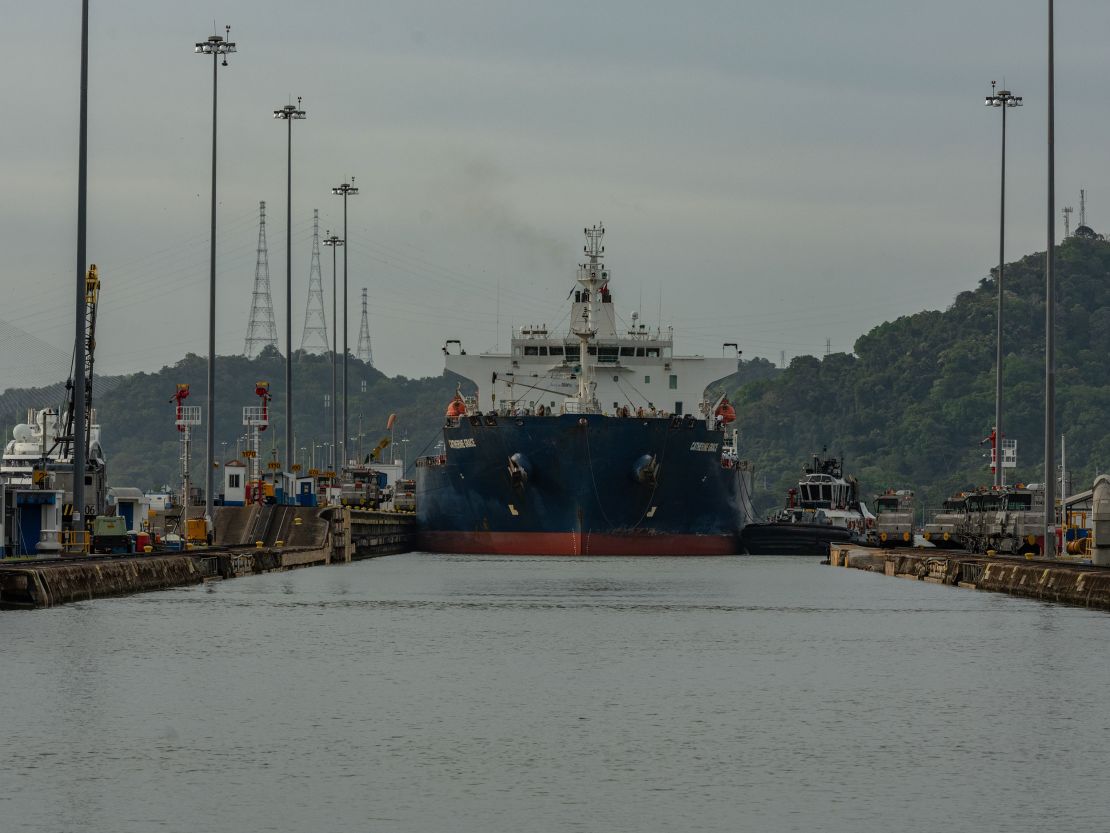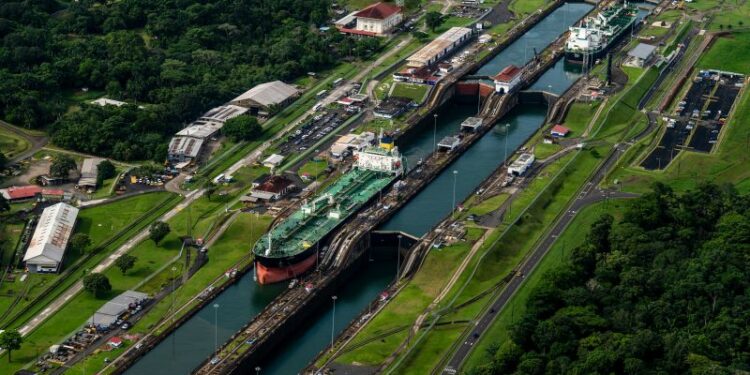CNN
—
The Panama Canal is an extraordinary feat of engineering. This waterway, which slices 50 miles across the isthmus of Panama to connect the Atlantic and Pacific Oceans, is an artery of world trade and a key source of Panamanian pride. But it’s in trouble.
More frequent, intense droughts have put the vital shipping route into crisis mode and pushed authorities to pursue a controversial plan to dam a river in an effort to secure its survival — an act that would flood the homes of thousands of people.
Now, the Panama Canal finds itself in the crosshairs of President Donald Trump’s expansionist agenda. “We were already in a situation of instability … then President Trump jumps onto the scene,” said Osvaldo Jordán, a political scientist based in Panama City.
Since taking office, Trump has demanded the US take control of the canal, refusing to rule out the possibility of using military force. He has falsely claimed China is operating the canal and railed against “exorbitant” fees.
He has been met with fierce pushback. “Panamanian sovereignty over the canal is clear. There is no discussion on this issue. The soul of a country is not up for discussion,” Panama’s President José Raúl Mulino said in January.
It’s unclear how serious Trump’s threat is, or even how the US could practically take over the canal, but experts say he may get more than he bargained for if he thrusts the US into responsibility for a global waterway grappling to avoid crisis in a new era of extreme weather.
US interests have been intertwined with the Panama Canal for more than a century. The US built the canal between 1904 and 1914, then managed it for decades.
In the late 1970s, amid mounting opposition to its continued control, the US agreed to hand it to Panama, which eventually took full control in 1999 through the Panama Canal Authority, an autonomous state agency.
The canal now carries more than 3% of global shipping trade. Managing it is an intricately complex feat.
It’s “basically a water elevator,” said Ilya Espino de Marotta, deputy administrator of the Panama Canal Authority.
A system of interconnecting locks raises ships around 26 meters (85 feet) above sea level, where they travel through Lake Gatún — one of the world’s largest artificial freshwater lakes — before being lowered back into the ocean.
Each transit requires a staggering 50 million gallons of water from Lake Gatún, which not only feeds the canal but also provides drinking water for more than 50% of Panama’s growing population.
Lake Gatún, along with Lake Alajuela, which also supports the canal, are 100% reliant on rainfall, Marotta told CNN. That makes them very vulnerable drought.
Panama is one of the wettest countries on Earth but is heavily affected by El Niño, a natural climate pattern which tends to reduce rainfall in the region.
Historically, major dry events happened in Panama around once every 20 years, said Steve Paton, who heads the physical monitoring program for the Smithsonian Tropical Research Institute in Panama. But the country has experienced three in less than three decades.
In 2023 and 2024, an El-Niño-fueled drought pushed Lake Gatún to critical lows. Canal authorities were forced to reduce the transits from a typical 36 a day to 24, disrupting global supply chains.
It was “something that I had never seen before,” said Captain Alvaro Moreno, who has worked as a Panama Canal pilot since 1995, steering ships through the waterway. Major dry seasons are happening more often now, he told CNN.
“The big, existential worry is that this is climate change,” Paton said. Scientists are still trying to work out if the climate crisis influences El Niño events, but they are clear it is pushing up temperatures and changing rainfall patterns.
“I’m seeing combinations of weather that I don’t recognize,” said Paton, who has been studying weather patterns in Panama for 30 years.
Authorities have sought to expand the canal as global commerce grows. In 2016, work finished on a huge project to increase capacity and add new locks, allowing mega ships — including US vessels carrying liquified natural gas — to pass through the canal.
But the water problem only got worse. To solve it, the canal authority has now landed on a plan to dam the nearby Río Indio to create a new reservoir. The $1.6 billion project will take an estimated six years to complete.
“We don’t know how climate change is going to evolve,” Marotta said, but the canal authority believes the project will give the waterway stability for 50 years in the face of more extreme and frequent droughts.

The project is controversial, however, as it means flooding communities, displacing around 2,300 people and submerging homes, farms, schools and healthcare clinics.
It’s “a direct threat to the communities that have inhabited and worked these lands for generations,” said Alberto Agrazal a social researcher associated with the Ecology Network of the Catholic Church.
The canal authority has promised to relocate people and is currently in discussions with local communities. But a history of displacement for canal projects has fostered mistrust, Agrazal told CNN. Opposition is “strong and organized,” he added.
Even if the dam is successfully constructed, it’s unlikely to be enough, said Jordán, the political scientist. The canal also needs better management, including protecting forests, reducing pollution and tackling unchecked urban sprawl, he said. Without this, “you may do Río Indio and three more dams, and it’s still going to be a problem.”

Keeping this global trade route running is no easy task. Outsiders often think of the canal as a machine that can be operated by simply turning a key, Jordán said, “but it’s nothing like that. … It’s a complicated web.”
It’s highly unlikely Trump is even aware of Panama’s plans to expand the canal, said Ryan Berg, director of the Americas program at the Center for Strategic and International Studies, a bipartisan think tank. It’s a long-term project and “Trump operates on Trump time, which means quickly,” he told CNN.
While Trump’s threats to retake the canal should be taken very seriously, Berg said, the president’s “chest-thumping and expansionist” rhetoric is likely aimed more at securing concessions, including lower tolls and reducing any Chinese influence on the canal. “It’s really not even clear how we would take it back,” he added.
Still, Trump’s threats echo across Panama, where the canal is part of its national identity, and ensuring its continued survival as climate change meets geopolitical upheaval is considered a uniquely Panamanian task.
The canal was not a gift, “it was the handing over of what was always Panama’s,” said Renate Sponer of Ya es Ya, the Panama chapter of the international environmental group Scientist Rebellion. “Any problem it faces must be solved by Panamanians.”
Source link : http://www.bing.com/news/apiclick.aspx?ref=FexRss&aid=&tid=67b89b96de2c44f68852b75bddf1277e&url=https%3A%2F%2Fedition.cnn.com%2F2025%2F02%2F21%2Fclimate%2Fpanama-canal-drought-dam-trump%2Findex.html&c=4973275414106592814&mkt=en-us
Author :
Publish date : 2025-02-20 20:00:00
Copyright for syndicated content belongs to the linked Source.





